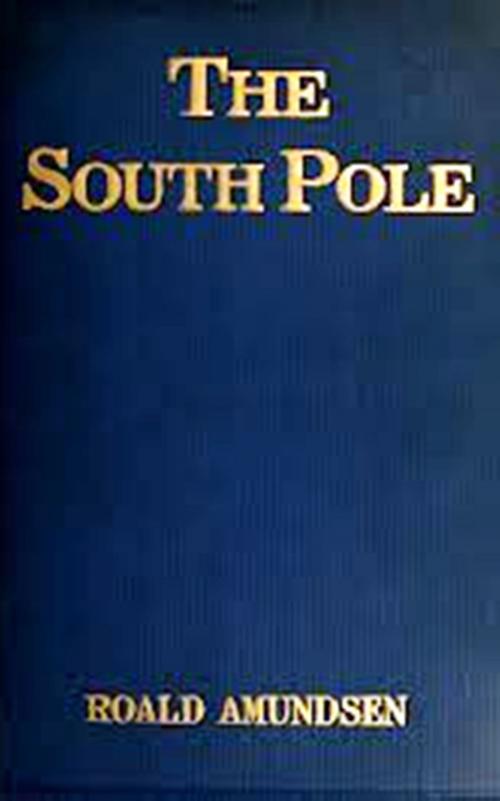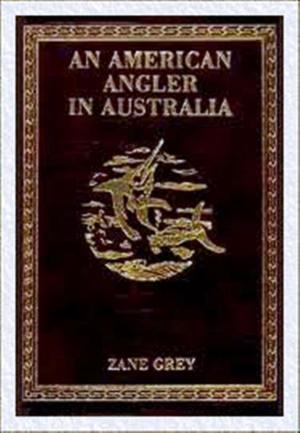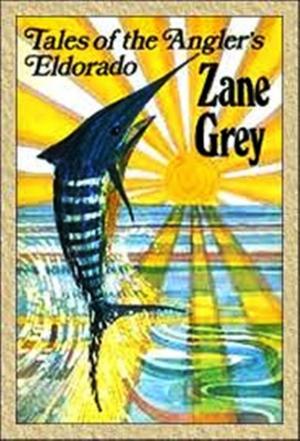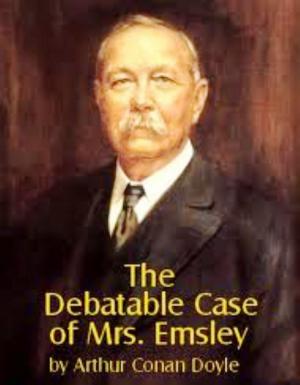| Author: | Roald Amundsen | ISBN: | 1230000139742 |
| Publisher: | WDS Publishing | Publication: | June 6, 2013 |
| Imprint: | Language: | English |
| Author: | Roald Amundsen |
| ISBN: | 1230000139742 |
| Publisher: | WDS Publishing |
| Publication: | June 6, 2013 |
| Imprint: | |
| Language: | English |
On February 10, 1911, we started for the South to establish depots,
and continued our journey until April 11. We formed three depots and
stored in them 3 tons of provisions, including 22 hundredweight of
seal meat. As there were no landmarks, we had to indicate the position
of our depots by flags, which were posted at a distance of about four
miles to the east and west. The first barrier afforded the best going,
and was specially adapted for dog-sledging. Thus, on February 15 we
did sixty-two miles with sledges. Each sledge weighed 660 pounds,
and we had six dogs for each. The upper barrier ("barrier surface")
was smooth and even. There were a few crevasses here and there, but
we only found them dangerous at one or two points. The barrier went
in long, regular undulations. The weather was very favourable, with
calms or light winds. The lowest temperature at this station was -49°
F., which was taken on March 4.
When we returned to winter quarters on February 5 from a first trip,
we found that the Fram had already left us. With joy and pride we heard
from those who had stayed behind that our gallant captain had succeeded
in sailing her farther south than any former ship. So the good old
Fram has shown the flag of Norway both farthest north and farthest
south. The most southerly latitude reached by the Fram was 78° 41'.
Before the winter set in we had 60 tons of seal meat in our winter
quarters; this was enough for ourselves and our 110 dogs. We had built
eight kennels and a number of connecting tents and snow huts. When we
had provided for the dogs, we thought of ourselves. Our little hut
was almost entirely covered with snow. Not till the middle of April
did we decide to adopt artificial light in the hut. This we did with
the help of a Lux lamp of 200 candle-power, which gave an excellent
light and kept the indoor temperature at about 68° F. throughout the
winter. The ventilation was very satisfactory, and we got sufficient
fresh air. The hut was directly connected with the house in which we
had our workshop, larder, storeroom, and cellar, besides a single
bathroom and observatory. Thus we had everything within doors and
easily got at, in case the weather should be so cold and stormy that
we could not venture out.
The sun left us on April 22, and we did not see it again for four
months. We spent the winter in altering our whole equipment, which our
depot journeys had shown to be too heavy and clumsy for the smooth
barrier surface. At the same time we carried out all the scientific
work for which there was opportunity. We made a number of surprising
meteorological observations. There was very little snow, in spite
of there being open water in the neighbourhood. We had expected to
observe higher temperatures in the course of the winter, but the
thermometer remained very low. During five months temperatures were
observed varying between -58° and -74° F. We had the lowest (-74°
F.) on August 13; the weather was calm. On August 1 we had -72°
F. with a wind of thirteen miles an hour. The mean temperature for
the year was -15° F. We expected blizzard after blizzard, but had
only two moderate storms. We made many excellent observations of the
aurora australis in all parts of the heavens. Our bill of health was
the best possible throughout the whole winter. When the sun returned
on August 24 it shone upon men who were healthy in mind and body,
and ready to begin the task that lay before them.
On February 10, 1911, we started for the South to establish depots,
and continued our journey until April 11. We formed three depots and
stored in them 3 tons of provisions, including 22 hundredweight of
seal meat. As there were no landmarks, we had to indicate the position
of our depots by flags, which were posted at a distance of about four
miles to the east and west. The first barrier afforded the best going,
and was specially adapted for dog-sledging. Thus, on February 15 we
did sixty-two miles with sledges. Each sledge weighed 660 pounds,
and we had six dogs for each. The upper barrier ("barrier surface")
was smooth and even. There were a few crevasses here and there, but
we only found them dangerous at one or two points. The barrier went
in long, regular undulations. The weather was very favourable, with
calms or light winds. The lowest temperature at this station was -49°
F., which was taken on March 4.
When we returned to winter quarters on February 5 from a first trip,
we found that the Fram had already left us. With joy and pride we heard
from those who had stayed behind that our gallant captain had succeeded
in sailing her farther south than any former ship. So the good old
Fram has shown the flag of Norway both farthest north and farthest
south. The most southerly latitude reached by the Fram was 78° 41'.
Before the winter set in we had 60 tons of seal meat in our winter
quarters; this was enough for ourselves and our 110 dogs. We had built
eight kennels and a number of connecting tents and snow huts. When we
had provided for the dogs, we thought of ourselves. Our little hut
was almost entirely covered with snow. Not till the middle of April
did we decide to adopt artificial light in the hut. This we did with
the help of a Lux lamp of 200 candle-power, which gave an excellent
light and kept the indoor temperature at about 68° F. throughout the
winter. The ventilation was very satisfactory, and we got sufficient
fresh air. The hut was directly connected with the house in which we
had our workshop, larder, storeroom, and cellar, besides a single
bathroom and observatory. Thus we had everything within doors and
easily got at, in case the weather should be so cold and stormy that
we could not venture out.
The sun left us on April 22, and we did not see it again for four
months. We spent the winter in altering our whole equipment, which our
depot journeys had shown to be too heavy and clumsy for the smooth
barrier surface. At the same time we carried out all the scientific
work for which there was opportunity. We made a number of surprising
meteorological observations. There was very little snow, in spite
of there being open water in the neighbourhood. We had expected to
observe higher temperatures in the course of the winter, but the
thermometer remained very low. During five months temperatures were
observed varying between -58° and -74° F. We had the lowest (-74°
F.) on August 13; the weather was calm. On August 1 we had -72°
F. with a wind of thirteen miles an hour. The mean temperature for
the year was -15° F. We expected blizzard after blizzard, but had
only two moderate storms. We made many excellent observations of the
aurora australis in all parts of the heavens. Our bill of health was
the best possible throughout the whole winter. When the sun returned
on August 24 it shone upon men who were healthy in mind and body,
and ready to begin the task that lay before them.















